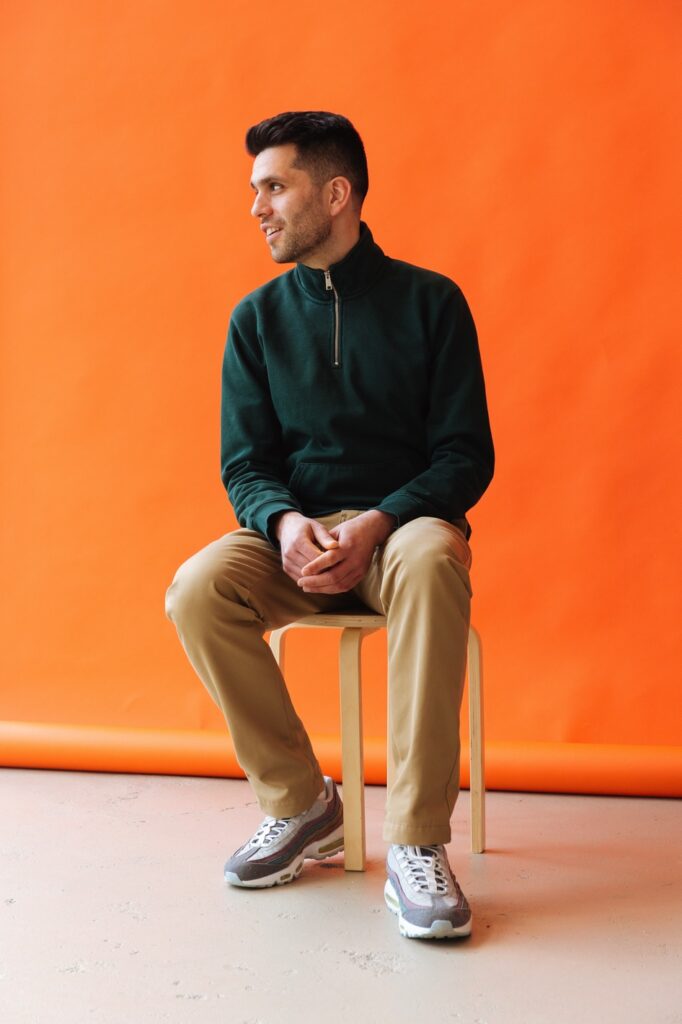The communities where music lives are cultural ecosystems that provide support, understanding and growth. So how do they push into the future, whilst staying authentic – and retaining their soul in a changing world? We spoke to Katharina Bricchi, co-founder of the Berlin gender- and genre-fluid queer party series NEST; and Arjun Chadha, the founder of an award-winning hip-hop and culture magazine, to find out.
Authenticity, identity and continuity
Structural and societal change is a fact of life. These changes can have an effect on our scenes – and, importantly, our scenes can affect how that change happens. How do we preserve the essence of a music scene while actively transforming the spaces and systems that sustain it?
Katharina
Preservation doesn’t mean holding still — it means remembering what matters as we move forward. The emotional and cultural essence of a scene often lives in its relationships, in shared values and collective rituals. For us at NEST, this means centering care, access, and autonomy while also evolving the formats, venues, and structures we work within. Authenticity isn’t static — it emerges when people feel seen and supported in spaces that invite real presence. Continuity, then, depends on intentional transformation, not nostalgia. The challenge is to scale our values, not just our productions.


Arjun
Preserving something, in my opinion, is not the same as transforming it. If you’re working with the intention of preserving a scene then you’re not necessarily concerned with transforming it, and vice versa. Both, however, are a collective effort (not an individual one). A helpful way to look at this is to consider any cultural scene as an ecosystem. Within that ecosystem, each individual contributor plays their own role and part. Some contributors make art, others report or critique the art, and some, for example, either consume the art or organise events that showcase the art. So, while a transformation takes place within a scene, its ability to preserve its essence is directly proportional to the health of the ecosystem. If, as a whole, the scene doesn’t attach much value to documenting itself, then the likelihood of it preserving its ‘essence’ is small. I guess what I’m trying to say is that we’re all — as individual contributors — the leaves on a tree, and not the tree itself.
But, when it specifically comes to preserving something, in my opinion, we’re talking about documenting it. And documenting it has to do with trying to capture and define the thing that you’re trying to document, while simultaneously challenging any preconceived notions surrounding it (even if those are your own). In other words: any cultural or music scene is pluralistic, and a good way to document that is by accepting the different opinions and ideas around it, and by including (and being mindful of) the different voices that collectively form a scene. Think, for example, about involving inter-generational and multi-disciplinary voices, or about having Black and brown voices write about Black and brown culture (we likely attach importance differently or find nuance that others won’t). Embracing the possible contradictions or frictions within a scene is paramount to preserving it. It should be a reflection of the scene’s diversity, preferably with the scene’s involvement, and shouldn’t reflect a single perspective.
Ultimately, the quality of your ability to document something is in direct relation to your engagement with it. You need to genuinely care more about the thing that you’re trying to capture than you care about the clicks, revenue, and popularity that it can potentially generate.
A shared, long-term responsibility
We might intuitively understand how artists, organisers, and storytellers shape how people experience a scene – but what are their responsibilities in creating its resilience and future infrastructure?
Arjun: It’s, again, a collective responsibility, in my opinion. Artists make art. Organisers organise events. Storytellers tell stories. Individually, they don’t contribute to a scene’s resilience and future infrastructure. Collectively, though, if they engage with the art and with each other enough, while also creating a safe space for critical conversations, then discussions around the future and resilience will hopefully surface automatically. And if this happens frequently and consistently enough, it’ll likely trickle into the thought-process of the artists making art, the organisers organising events, and storytellers telling stories — they’ll carry that responsibility collectively.
Katharina: We all co-create the future, whether we claim that responsibility or not. Artists, organisers, and storytellers have a unique ability to narrate possibilities — to stretch what’s imaginable. With that comes the responsibility to shape a culture that doesn’t just react to trends, but invests in long-term infrastructure: accessible venues, fair labor conditions, inclusive lineups, and sustainable funding models. Resilience isn’t just about surviving challenges — it’s about building systems that allow new voices and new needs to emerge and be held. Scene-building is a collective, ongoing act — not a passing aesthetic.
Scenes beyond today’s limitations
What new models of community and space could we prototype now to ensure music culture not only survives – but thrives – in 10 or 20 years‘ time?
Katharina: We need to prototype spaces that are adaptive, multi-use, and community-owned. Spaces that hold more than just parties — spaces that become hubs for skill-sharing, care networks, education, and rest. Hybrid models — combining physical spaces with digital infrastructures — could allow broader access and resilience. I think the future lies in decentralised collectives, where power and resources are shared, and where community members shape the culture, not just consume it. Tech should support connection and autonomy, not extractive or surveillance-based systems. Thriving means more people having more agency — in sound, space, and story.
Arjun: I think the most important thing to consider, when it comes to the next 10 or 20 years, is our dependence on technology. As a result of not considering this enough, ownership and archives have disappeared. We’ve, for example, seen platforms like RedBull Music Academy (including its vast library of important talks) vanish into thin air, and we’re now seeing how you lose ownership over your work if you, for example, use WeTransfer. It’s a glaring blindspot that needs careful consideration.
To consider a more practical example: a popular Instagram account’s influence, is extremely vulnerable, even if it’s intentionally trying to preserve and document a music scene. What happens when Instagram’s community reviewers deem its content ‘too political’? Understanding how the different platforms and their algorithms seep into the creative process is another important dimension to this same problem: are you making this piece of content because it’ll perform well on the algorithm, or are you making it because you consider it important regardless of whether it’s popular?
Long story short: preserving something also has a lot to do with protecting it. Independent media outlets, within this context, can function as a strong example of what people care about within a scene, without external influence.
A couple of specialist questions for Katharina and Arjun
A question for Katharina: How is queer nightlife continually redefining what a “music scene” can be — not just in sound and style, but in how care, resistance, and identity are embedded in shared spaces? And what does the future hold here?
Katharina Bricchi: Music has always shaped how I perceive the world. Growing up between Rome and Milan and later moving to Berlin, I experienced how sound can be both deeply personal and profoundly communal. The bond we form with music is intimate — it shapes emotion and identity. When that bond exists, it can be shared with others. At the same time, sound can also become meaningful because of the community that introduces it, a community that wraps it in care, values, and a particular way of being together.
Queer nightlife thrives in this exchange. It’s where individual and collective connections to sound meet, where music isn’t just played but held. Here, a track doesn’t only move bodies — it carries safety, resistance, and affirmation. The dancefloor becomes a place where identity is fluid, where care is embedded in the very architecture of the night.
In this way, queer nightlife constantly redefines the music scene. It centers conditions rather than trends — asking how sound can nurture, how spaces can protect, and how culture can grow without losing its soul.
Looking ahead, its future lies not in scaling up but in deepening these principles: more peer-led spaces, more shared ownership, more intentional designs where music and care are inseparable. Queer nightlife shows us that sound itself can be a form of care, and that when we hold it with intention, it opens futures that are freer, softer, and more connected.
A question for Arjun: How can music journalism evolve into a cultural space of its own — not just reflecting scenes, but actively shaping them?
Arjun Chadha: Doesn’t music journalism already do this to some extent? If a musician reads or watches either a critique or praise of their work, they can choose to respond to it in their next work (or not). That in itself is a form of dialogue that can result in the re-shaping of art within a scene. Personally, that’s not the journalism that I’m interested in. Not because I’m allergic to it, but rather because it’s already being done — someone within the ecosystem is already doing it. What often isn’t being done in music journalism, however, is long-form and thoughtful pieces that extrapolate small ideas into universal ones — engaging music with ideas outside of itself.
The sneaky assumption underpinning this question, however, is the way we view and define music journalism. A TikTok account, an online blog, a podcast, or even a physical magazine or newspaper are all equally music journalism to me. That includes gossip and review coverage of the music as much as it includes historical context and the business coverage of music. It’s quite broad. And if I consider that as my lens — which it is — then I’d be likely to say that journalism isn’t a cultural space of its own. Nor should it aspire to be. In economic terms: I believe that (music) journalism is a public good, and that any resulting influence or impact that it has is a byproduct and reflection of its quality. That’s it.

